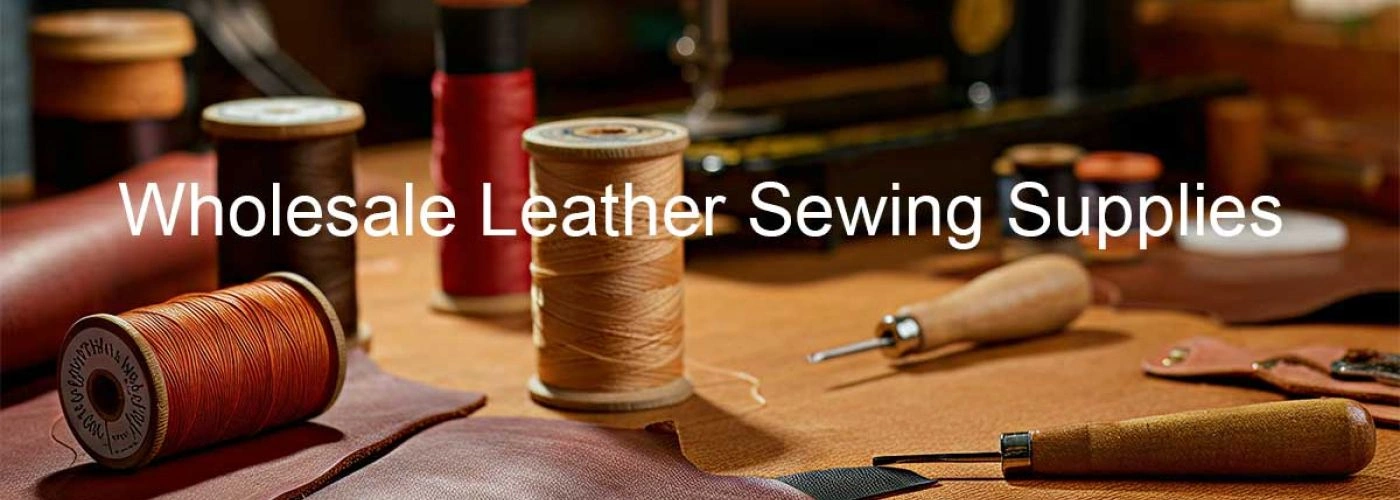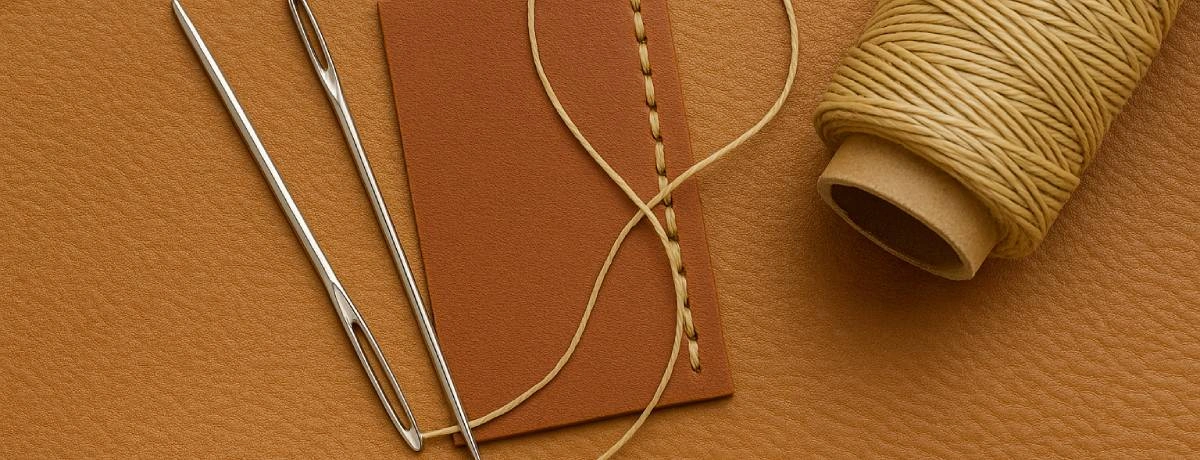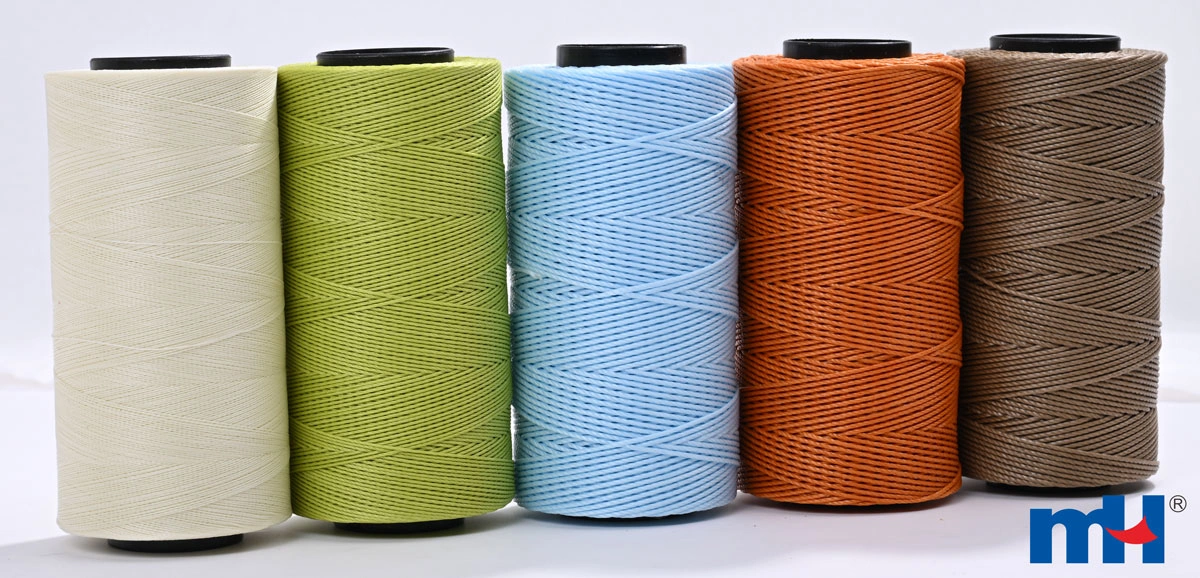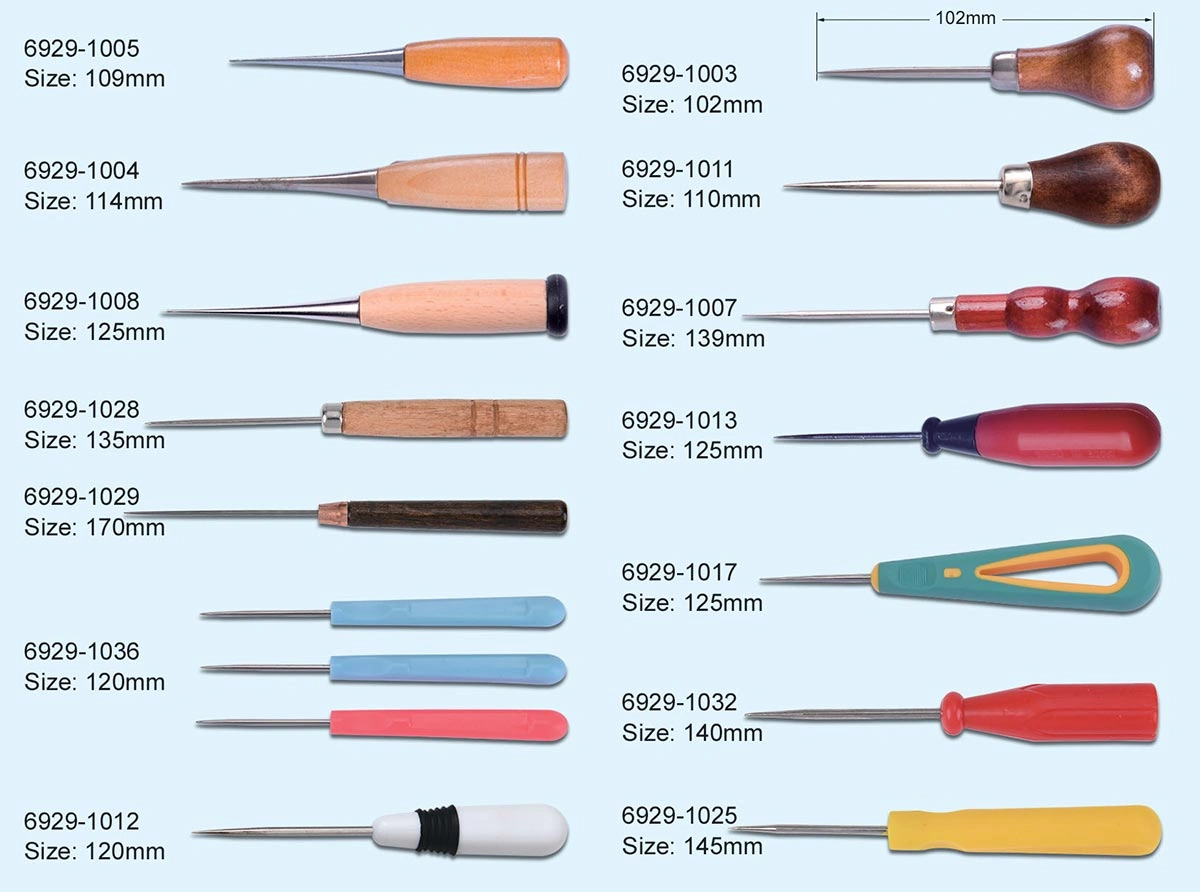
Leather Sewing Supplies: Essential Tools for Sewing Leather Wholesale from China MH
Introduction
Leather sewing requires not only craftsmanship but also the right tools and materials. Natural leather materials may have minor imperfections such as discoloration; these are common and do not affect the quality of the finished project. Whether you are creating a leather bag, repairing a car seat, or crafting leather accessories, choosing the correct sewing supplies—such as thread, needles, and machines—directly impacts your project’s quality and durability.
This guide covers everything you need to know about leather sewing supplies, from selecting the ideal thread type to mastering machine stitching techniques.
1. Leather Sewing Threads

1.1 Heavy Duty Top Stitching Thread for Leather
Leather is tough, so ordinary thread won’t hold up. A heavy-duty top stitching thread provides superior strength and abrasion resistance. It is ideal for visible seams on leather bags, belts, and upholstery.
Learn how to choose the right thickness, fiber type (polyester or nylon), and finish for your leather projects.
1.2 Leather Sewing Thread Size Chart
Selecting the right thread size is key for achieving balanced and durable stitches.
This thread size chart helps you match the correct thread thickness to your leather’s weight—ensuring both aesthetic appeal and functionality.
For example, size 138 or 207 threads are perfect for thick leather goods, while size 69 works better for lighter materials.
1.3 Leather Sewing Thread Comparison Guide
Understanding the differences between polyester, bonded nylon, and waxed threads can save time and cost.
-
Bonded Nylon Thread – high strength, smooth performance, excellent UV resistance.
-
Polyester Thread – superior weather resistance for outdoor leather applications.
-
Waxed Thread – perfect for hand stitching and craft projects that require a natural look.
1.4 Leather Wax Thread for Leather Craft

Waxed threads add friction and grip, allowing for tight and uniform hand stitches.
Learn when to use leather wax thread—ideal for wallets, belts, and other hand-sewn items—and when to opt for unwaxed threads for smoother machine sewing.
1.5 Best Sewing Thread for Leather Work
Choosing the best thread for leather depends on your project’s stress level, appearance, and color match.
For example, bonded polyester is favored for automotive and outdoor projects, while nylon thread works better for soft leather goods and fashion items.
2. Leather Needles and Tools

2.1 Hook Needle for Leather: The Essential Tool
A hook needle is a must-have for professionals using cylinder-arm or post-bed sewing machines. It creates a clean lockstitch and penetrates thick layers of leather without tearing the material.
Find out how needle point design (round vs. diamond) affects your results.
2.2 How to Thread a Leather Needle
Threading a leather needle may seem simple but can make a big difference in stitch consistency.
This guide teaches the correct threading path and tension adjustments to avoid skipped stitches or broken threads.
2.3 Hand Sew Leather Needle: How to Choose the Right One
When hand-stitching leather, your needle must match your thread and hole size.
Learn the differences between glover’s needles, harness needles, and saddler’s needles, and how to pick the right one for each craft.
2.4 Choosing the Right Leather Machine Needle
Machine sewing requires specific needles like leather point (LR, S, DI) to slice through dense hides cleanly.
This section helps you match needle size to thread size—for example, size 18/110 for lighter leather and size 22/140 for heavy-duty work.
3. Essential Cutting Equipment for Leather Sewing
When it comes to leather sewing, having the right cutting equipment is crucial for achieving professional-looking results. The right tools not only make your project easier but also ensure clean, precise cuts that enhance the quality and longevity of your finished leather items. Whether you’re crafting a custom belt, making straps, or working on a detailed leather accessory, investing in the proper cutting tools will help you tackle any project with confidence and efficiency.
3.1 Types of Leather Cutting Tools
There’s a wide variety of leather cutting tools available, each designed to handle different materials and project needs. Here are some of the most popular options:
-
Rotary Cutters: These tools are great for making quick, straight cuts and smooth curves in leather. Rotary cutters are especially useful for crafting straps, belts, and other long, straight-edged items, making them a favorite for both beginners and experienced crafters.
-
Leather Shears: Heavy-duty leather shears are designed to cut through thick materials with ease. They’re perfect for larger projects where you need to trim down hides or cut multiple layers of leather quickly and efficiently.
-
Craft Knives: For intricate designs and detailed patterns, craft knives offer precision and control. They’re easy to handle and ideal for making custom shapes or cutting out small pieces for your leather craft projects.
-
Die-Cutting Machines: If you’re working on a large-scale project or need to produce multiple identical pieces, die-cutting machines are a great investment. These tools use metal dies to cut out precise shapes, saving you time and ensuring consistency across your products.
With the right combination of these leather tools, you’ll find it easy to tackle any craft project, from simple straps to complex accessories, and achieve great results every time.
3.2 How to Choose the Right Cutting Equipment
Selecting the best cutting equipment for your leather project can make a big difference in both the process and the final product. Here are some key factors to consider when shopping for leather cutting tools:
-
Type of Leather: The thickness and texture of your leather will determine which tools you need. Thicker materials may require heavy-duty shears or rotary cutters, while thinner leathers can be managed with craft knives.
-
Project Size: Consider the size of your project. Large projects, like making multiple straps or belts, may benefit from larger tools or die-cutting machines, while smaller, detailed work is best handled with craft knives.
-
Price: Cutting tools come in a wide range of prices. Set a budget that fits your needs—sometimes investing a bit more upfront can save you money in the long run by providing better results and longer-lasting tools.
-
Reviews and Recommendations: Before making a purchase, check out reviews from other leather crafters. Their experiences can help you sort through the many options and find the best products for your needs.
By taking these factors into account, you’ll be able to choose the right leather tools for your project, making the process easier and helping you achieve professional results every time.
3.3 Maintenance and Safety Tips for Cutting Tools
Proper maintenance and safe handling of your leather cutting tools are essential for keeping them in top condition and ensuring your projects go smoothly. Here are some tips to help you get the most out of your tools:
-
Keep Tools Clean and Dry: After each use, wipe your tools with a dry cloth to remove any leather residue and prevent rust or corrosion.
-
Store Properly: Place your cutting tools in a dry, secure spot to avoid damage and keep them ready for your next project.
-
Use the Right Materials: Always pair your tools with the correct materials, such as leather-specific blades and cutting mats, to extend their lifespan and maintain sharpness.
-
Follow Safety Guidelines: Wear protective gloves and eyewear when cutting leather, and keep loose clothing and long hair secured to prevent accidents.
By following these maintenance and safety tips, you’ll ensure your leather tools last long and perform at their best. Ready to upgrade your toolkit? Start shopping in our leather tools category, where you’ll find a wide selection of products in various sizes and price ranges. Our services make it easy to sort through items, add them to your cart, and read customer reviews to help you make the right choice. With quick shipping and great support, you’ll have everything you need to start making beautiful leather products and save on your next project. Let us help you find the perfect tools for your craft—shop now and get ready to create something amazing!
3. Leather Sewing Machines & Techniques
3.1 Mastering Machine Sewing Leather: Tips for Seamless Projects
Machine sewing leather can be tricky due to friction and thickness variations.
This guide offers practical tips:
-
Use a walking foot or roller foot to prevent leather from sticking.
-
Apply Teflon tape or lubricant to reduce friction.
-
Adjust tension and stitch length according to leather thickness.
Following these steps ensures even seams and a professional finish.
4. Where to Buy Leather Sewing Supplies
Buy Leather Sewing Supplies from MH Thread
MH Thread provides a complete range of leather sewing threads, needles, and accessories—engineered for strength, colorfastness, and smooth performance.
With high-quality ... polyester threads and professional-grade machine needles, MH Thread supports both industrial and hobby leather workers worldwide.
???? Visit MH Thread Official Website to explore the full range of leather sewing materials.
Conclusion
From selecting the perfect thread size to choosing the best leather needles and mastering machine techniques, every detail counts in leather sewing.
With MH Thread’s comprehensive leather sewing supplies, you can achieve strong seams, clean finishes, and long-lasting results—no matter the project size or material type.
 Whatsapp:
Whatsapp: